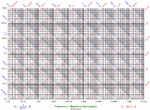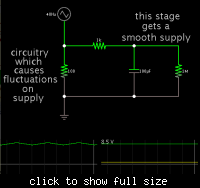neazoi
Advanced Member level 6
Hello I am building the attached regen receiver and I replace the variable with a bb212 Double varicap. I connect the varicap like this:
https://www.zl2pd.com/img/varicap/VaricapFig1.gif
It works, but the problem is that when going into oscillation (SSB) frequency fluctuations occur in the oscillating tone (BFO). When using an air variable the tone is frequency stable, but with the varicap it has these fluctuations.
The circuit and the varicap are powered from a 9V battery. I have added a potentiometer in a voltage divider configuration to vary the voltage to the varicap.
Any suggestions of what to do to avoid these frequency fluctuations?
https://www.zl2pd.com/img/varicap/VaricapFig1.gif
It works, but the problem is that when going into oscillation (SSB) frequency fluctuations occur in the oscillating tone (BFO). When using an air variable the tone is frequency stable, but with the varicap it has these fluctuations.
The circuit and the varicap are powered from a 9V battery. I have added a potentiometer in a voltage divider configuration to vary the voltage to the varicap.
Any suggestions of what to do to avoid these frequency fluctuations?


